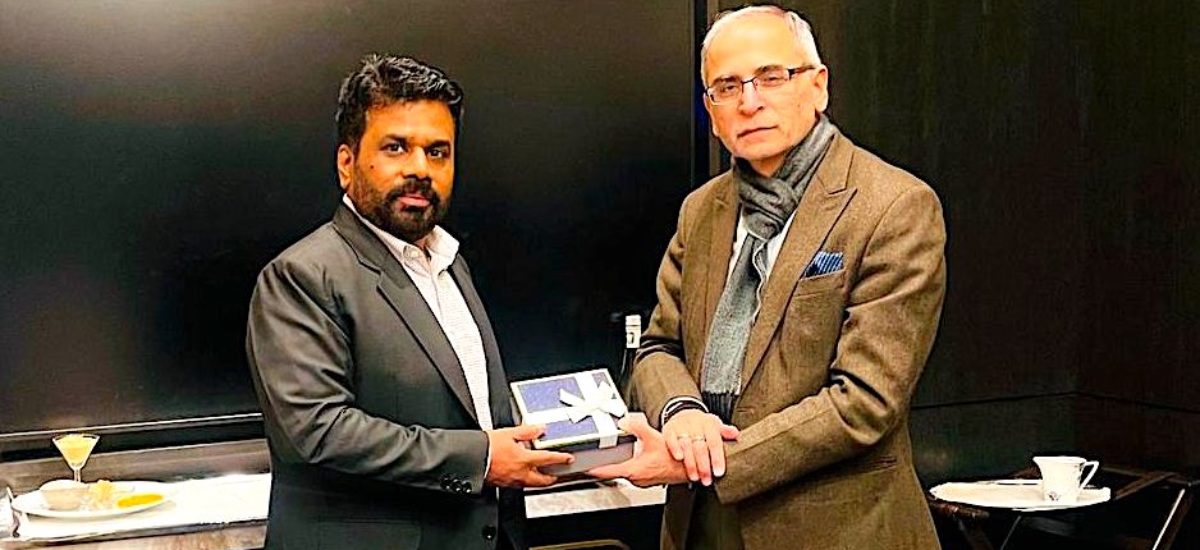Photo courtesy of Colombo Times
Amid the buzz surrounding the presidential race this year, the visit of the JVP-led National People’s Party (NPP) to India has raised much attention. As Sri Lanka plunged into a historic economic crisis, its political stability deteriorated. People’s hopes in terms of mainstream political parties have plummeted. Against this backdrop, expectations have turned towards alternative forces that are not yet in power.
In a survey conducted by the Institute for Health Policy, JVP leader Anura Kumara Dissanayaka was seen as a preferred candidate by 51 percent of people, opposition leader Sajith Premadasa with 33 percent support and Ranil Wickremesinghe got nine percent support. While the reliability of the survey could be questioned, the fact is that people think, why not give another party a chance? When people, mainly the younger generation, are trying to seek an alternate leader, the answer may be Mr. Dissanayaka.
The visit of the delegation received serious attention in the Indian media. The discussions with the Indian External Affairs Minister Dr. Subrahmanyam Jaishankar and National Security Advisor Ajit Kumar Doval highlighted the NPP’s role as a shaping force in Sri Lankan politics.
The JVP has been well known for its anti-India campaign. In 1971, Indian expansionism was one of the five political classes of the old JVP led by Rohana Wijeweera. In the lens of the old JVP, Indian origin estate workers were the “fifth column instrument of Indian expansionism.” In 1989, the JVP was instrumental in politicalizing anti-Indian sentiment among Sinhala youths based on the Indo-Lanka accord of 1987. The accord was used as a tool to lure Sinhala youth into the red club.
In the old JVP’s understanding, the Tamil struggle and India’s support were also part of the Indian expansion plan. However, the JVP’s fear of India was swept away when the Indian-trained LTTE turned against India’s presence in the North and Eastern provinces. The LTTE compromised with President Ranasinghe Premadasa and fought against the Indian Peace Keeping Force.
The LTTE published a booklet that explained their action against India. It pointed out that there was a convergence of interest between the LTTE and the Sri Lankan government in sending away the Indian Army. It compared the LTTE’s action to that of Chinese leader Mao Zedong. “Mao compromised with Chiang Kai-Shek to send the Japanese out of China. There is a similarity between that action and ours. Both are historically justified.” Given this background, the old JVP’s idea of Indian expansion is a myth.
The JVP turned to democracy after failing to seize power through the barrel of the gun. Since then, it has been playing an energetic but unrealistic role in politics. Its unrealistic politics has prevented it from succeeding in mainstream politics. It is against this backdrop that the JVP has been trying to adopt changes. Is the JVP trying to rewrite its political understanding or is it trying to put a liberal mask?
Even after turning to democracy, the JVP has not proved its consistency with India’s interests in the region. Until recently, the JVP opposed India’s major economic projects in Sri Lanka. However, the NPP’s approach towards India indicates its changes in geopolitical understanding. The NPP has caught the geopolitical reality in the region, which means that if a party wants to come into power, it is not only enough to appease the local population; it must also learn to partner with a big power in the region. In this context, NPP seems to be on the right track.
Mr. Dissanayaka’s recent interview in the Hindu newspaper shows how JVP has transformed itself. “India is our closest neighbor and major political economic center, so when we take political economic decisions, we must always be careful about the impact they will have on India,” he said.
Mr. Dissanayaka’s visit to India has drawn criticism from anti-Indian pockets but those who believe in the inevitability of change in politics would welcome the NPP’s stance. While the NPP’s visit to India exemplifies changes in its political understanding, it has another important dimension in domestic politics. India’s official approach to the NPP is recognition for its recent rise in the South; New Delhi judged that the NPP coalition has the potential to play a decisive role in the upcoming presidential election.
The old JVP was basically a child of Cold War politics. Marxism-Leninism was an attractive ideology with jargon that ignited the minds of the youth. But the JVP’s idea of Indian expansionism was not a byproduct of Marxist-Leninist ideology but rather a result of old fears of Sinhala nationalism. There is an unnecessary fear among a small group of Sinhala nationalists who think that India may swallow up Sri Lanka. As a radical Sinhala nationalist force, the old JVP relied on this fear psychology and fueled this fear in 1971 and 1987-1990.
However, the political landscape has changed drastically. Given this background, the NPP realizes that anti-Indian politics are no longer useful to move forward. The JVP’s past is not an issue; the past is past because political approaches are not permanent but changeable. A particular political decision may have been taken at due to survival reasons, misconceptions or a lack of political understanding.

